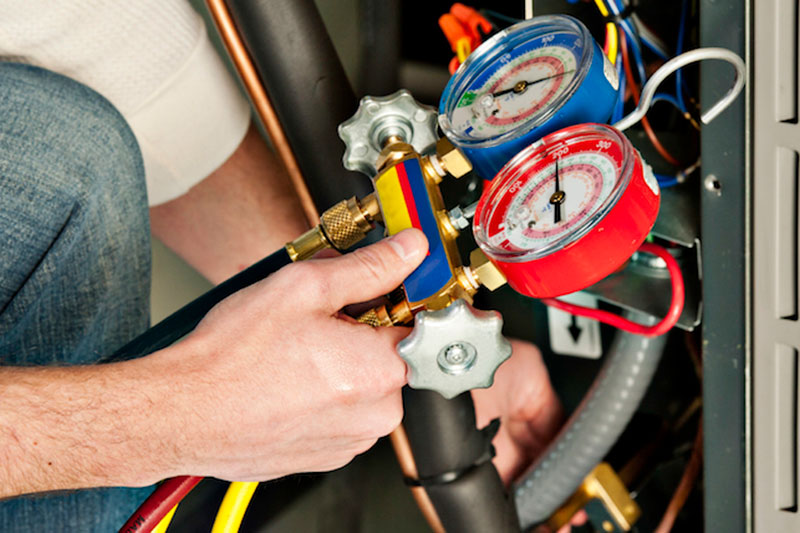
You might not think a lot about how your air conditioner functions, but it relies on refrigerant to keep your residence fresh. This refrigerant is subject to environmental laws, because of the chemicals it contains.
Based on when your air conditioner was added to your home, it may require R-22, R-410A or R-32 refrigerant. We’ll go over the differences and which air conditioner refrigerants are being phased out in Moline, plus how these phaseouts have on influence on you.
What’s R-22 and Why Is It No Longer Being Made?
If your air conditioner was added before 2010, it probably has Freon®. You can find out if your air conditioner contains it by calling us at 309-517-7511. You can also inspect the name plate on your air conditioner condenser, which is situated outside your home. This sticker will have details on what model of refrigerant your AC uses.
Freon, which is also known as R-22, includes chlorine. Scientists consider this chemical to be harmful to the earth’s ozone layer and one that contributes to global warming. The Environmental Protection Agency, which governs refrigerants in the United States, barred its manufacture and import in January 2020.
I Use an Air Conditioner with R-22. Do I Need to Get a New One?
It differs. If your air conditioning is running properly, you can continue to keep it. With yearly air conditioner maintenance, you can expect your air conditioning to work around 15–20 years. However, the Department of Energy says that substituting a 10-year-old air conditioner could save you 20–40% on annual cooling costs!
If you don’t get a new air conditioner, it might cause a problem if you need air conditioning repair later on, specifically for refrigerant. Repairs may be pricier, since only reduced amounts of recycled and reclaimed R-22 is available.
With the end of R-22, most new air conditioners now rely on Puron®. Also known as R-410A, this refrigerant was created to keep the ozone layer strong. Because it requires an incompatible pressure level, it doesn’t work with air conditioners that use R-22 for cooling.
However, Puron still has the likelihood to contribute to global warming. As a result, it might also ultimately be ended. Although it hasn’t been mandated yet for residential air conditioners, it’s anticipated sometime this decade.
What Refrigerant Will Take the Place of R-410A?
In preparation of the end, some companies have begun using R-32 in new air conditioners. This refrigerant is classified low for global warming possibility—approximately one-third less than R-410A. And it also lowers energy use by about 10%, according to the Intergovernmental Panel on Climate Change’s Fourth Assessment Report. That’s savings that may be forwarded on to you through your energy expenses.
J.L. Brady Company LLC Can Assist with All Your Air Conditioning Needs
In summary, the alterations to air conditioner refrigerant probably won’t affect you greatly until you have to have repairs. But as we talked about beforehand, repairs connected to refrigerant can be pricier because of the restricted amounts that are accessible.
Not to mention, your air conditioner frequently breaks down at the worst time, often on the muggiest day when we’re experiencing lots of other requests for AC repair.
If your air conditioner uses an outdated refrigerant or is getting old, we suggest upgrading to an up-to-date, energy-efficient air conditioner. This delivers a hassle-free summer and may even lower your cooling expenses, especially if you select an ENERGY STAR®-rated model. Plus, J.L. Brady Company LLC provides many financing options to make your new air conditioner work with your budget. Contact us at 309-517-7511 to get started today with a free estimate.




